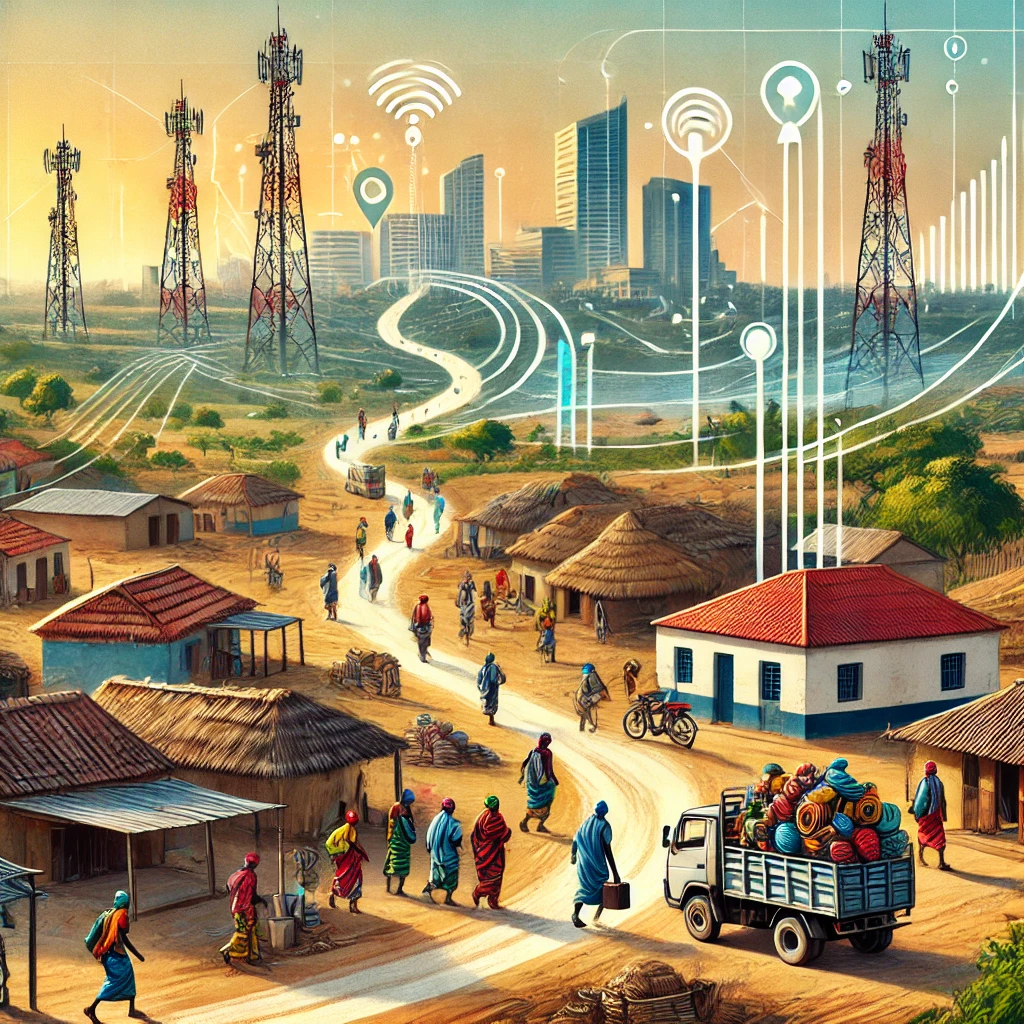Understanding Temporary Migration in Senegal: High-Resolution Data from Mobile Phone Records
Researchers from the Institut de Recherche pour le Developpement and Trinity College Dublin, alongside Orange Innovation, have developed a detailed temporary migration dataset for Senegal, using mobile phone data to provide unprecedented insights into migration flows and stocks across 151 locations. This open-access dataset, spanning 2013-2015, aims to improve policy interventions by accurately capturing short-term movements often missed by traditional surveys.

Researchers Paul Blanchard from the Institut de Recherche pour le Developpement and Trinity College Dublin, along with Stefania Rubrichi from Orange Innovation - SENSE, have developed a highly detailed temporary migration dataset for Senegal, leveraging mobile phone data to capture migration flows and stock across 151 locations. This dataset, spanning 2013 to 2015, offers unprecedented spatio-temporal granularity, particularly focusing on movements lasting between 20 and 180 days. Traditional surveys often miss such temporary movements, leading to a lack of reliable data, especially in sub-Saharan Africa. The new dataset provides detailed migration measures for half-month periods, utilizing methodological tools and algorithmic methods to detect temporary migration events from digital traces, addressing key challenges in aggregating individual trajectories into coherent migration statistics.
The Critical Role of Temporary Migration in Economic Activity
Temporary migration plays a crucial role in economic activity and development processes in developing countries. Previous research has largely focused on permanent migration, but recent studies highlight the significance of short-term mobility, often exceeding permanent moves. Temporary migration has been depicted both as a sign of rural livelihood failure and as a structural component of household livelihood strategies. Despite its importance, temporary migration is rarely integrated into national statistical systems due to its complexity and the cost of specialized surveys. The dataset introduced by Blanchard and Rubrichi aims to fill this gap by providing comprehensive data on short-term movements, which are vital for informing policy interventions related to environmental shocks, climate change, epidemics, and conflicts.
Leveraging Digital Footprints for Enhanced Human Mobility Insights
The dataset's creation is set against the backdrop of the rise of digital footprints from mobile phone usage as a significant source of big data for measuring human mobility. These data offer increased spatio-temporal granularity and have been used in various studies to quantify migration movements. However, previous datasets have not been publicly accessible, and the methods used often involve limitations, such as measurement errors due to coarse temporal resolution and challenges in characterizing migration flow directions. Blanchard and Rubrichi's dataset overcomes these issues with a robust methodological framework, improving the accuracy of migration event detection and providing a clear characterization of migration flows.
Methodology: From CDR Data to Coherent Migration Statistics
The dataset relies on Call Detail Records (CDR) from Senegal's main telecommunication company, Sonatel. These records, which include data on calls and texts, are processed through a voronoi tessellation method to define spatial units. The dataset covers 2,071 phone towers, with urban and rural areas differentiated to exclude intra-urban mobility and minimize measurement errors. To ensure privacy, CDR data are pseudonymized, and stringent observational constraints are applied to ensure the accuracy of migration detection. Two subsets, A and B, are created based on these constraints, balancing between accuracy and sample size.
A Significant Advancement in Understanding Temporary Migration
The migration detection algorithm is a multi-step process that estimates hourly, daily, and monthly locations for each user, using a clustering method to identify macro-segments (permanent residences) and meso-segments (temporary migrations). The algorithm distinguishes between short-term movements, temporary migrations, and permanent migrations, addressing the challenge of smoothing out noisy patterns from lower-scale movements. Temporary migration events are identified as meso-segments occurring at a location different from the usual residence and lasting between 20 and 180 days.
To produce representative migration statistics, a weighting scheme is applied, addressing sampling biases inherent in mobile phone data. The dataset provides both unweighted and weighted estimates, the latter extending the target population to the entire adult population over 15. Validation exercises confirm the local representativeness of phone users, and the weighting scheme corrects for disparities in population-to-users ratios across different strata.
Blanchard and Rubrichi's dataset is a significant advancement in understanding temporary migration in Senegal. It provides a valuable resource for researchers and policymakers, supporting the design of interventions in response to environmental, economic, and social challenges. The dataset, along with the methodological tools developed, can be adapted for use in other contexts, making it a versatile tool for migration studies globally. The dataset and accompanying code are publicly available, ensuring transparency and enabling further research and application.
- FIRST PUBLISHED IN:
- Devdiscourse News Desk
ALSO READ
Biden's Immigration Tightrope: Asylum Bans and Citizenship Offers
Lockbit 3.0 Cyber Attack Cripples Indonesia's Immigration Services
Trump's Bold Immigration Plan: Cracking Down on Illegal Entrants
South Sudan’s Remarkable Antelope Migration: A Conservation Triumph Under Threat
Bureau of Immigration imposes Rs 1 lakh fine on Indigo for visa violations










